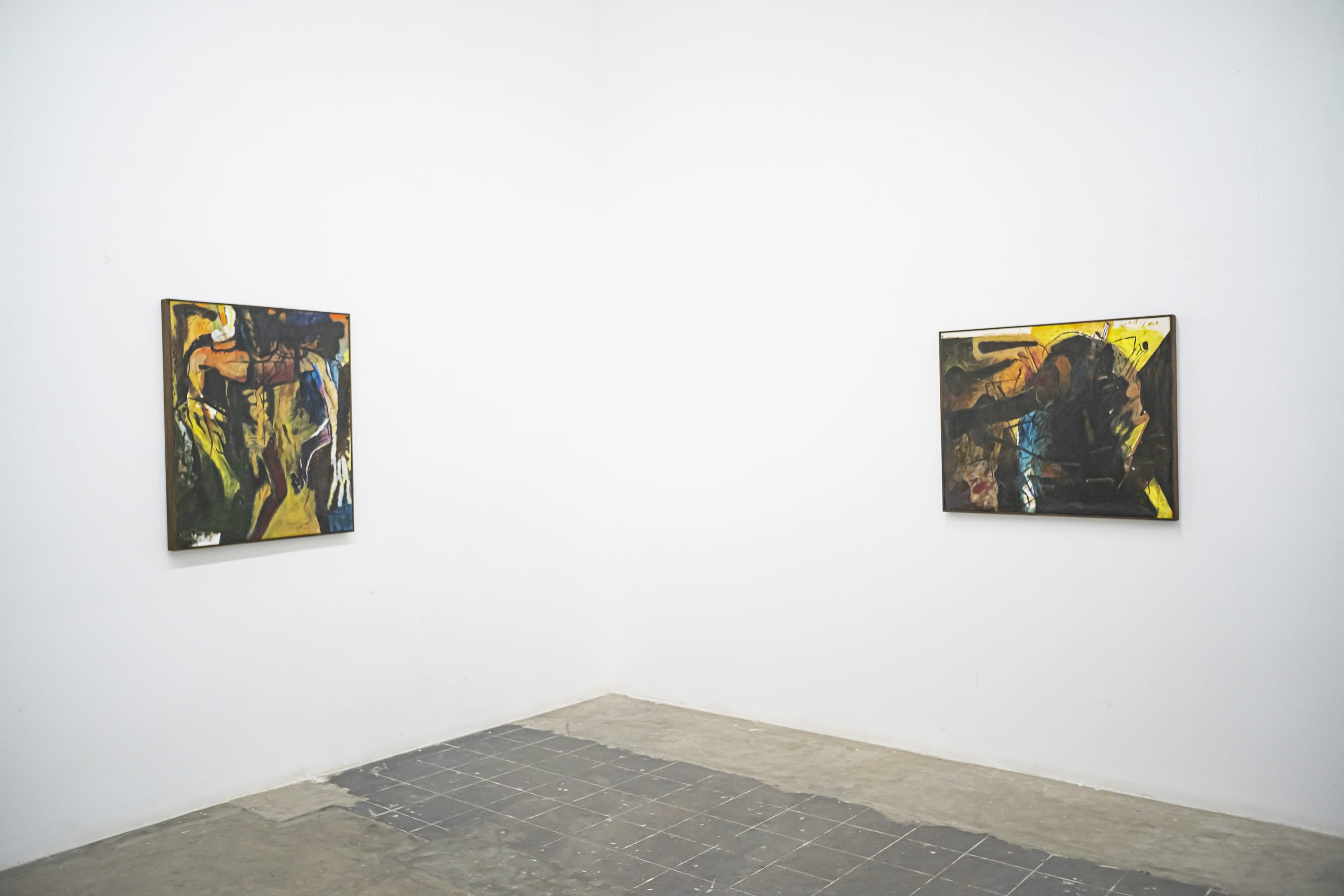-
Impetus presents Jagath Weerasinghe’s spontaneous and sporadic response to the brutal violence and tumultuous social and political events in Sri Lanka between 1983 and 1989. It exhibits works from 1989 to the mid-90s, created in the years preceding his 1992 Anxiety (Kansawa) show. The exhibition aims to define the visual, intellectual and thematic precursors that defined Jagath Weerasinghe’s three-decade-long career.
The images of decapitated heads, broken stupas and beastly human figures with contorted and elongated features become the visual devices that guide his intellectual inquiries. Weerasinghe’s oeuvre is a cathartic unfolding of an internal turmoil, characterised by a cognitive and emotional struggle to comprehend Sri Lanka’s post-independence landscape. -
-

-

-

-
-

-

-

-

-

Jagath Weerasinghe
The Rock, 1991Watercolor on Paper
76 x 57 cm
29 7/8 x 22 1/2 in -

-
Weerasinghe’s works also identify mothers as victims of a failed society caught in the crossfire of political ideologies, ethno-linguistic wars, and the overt expression of masculine power. Charged with empathy for their suffering, he essayed their harrowing experience through the dishevelled figures of mothers in his woodcut prints – corresponding with Woman with Dead Child (1903) a deeply moving image of a mother grieving the death of her young son by Kathe Kollwitz. It is a concern that also guides the creation of works such as the Shrine of the Innocents and Yantra Gala that ponder on the countless deaths of innocent youth and their mothers’ search for the missing children at sites of worship.
-
-
For this exhibition, Jagath Weerasinghe revisited the demolished 1999 public monument Shrine of the Innocents, which was built at Battaramulla to commemorate the Embilipitiya Massacre. Shrine of the Innocents, Kilinochchi: Where is my Child? (2023) was created through a collaborative process involving the bereaved mothers from Kilinochchi who left imprints of their grief on wet clay in a momentary transmission of pain. Love, anguish and hope are made visible through the clenched expression of the fist, a gesture that expresses emotional restraint. Unlike its previous iterations, the clay work is left unburnt in the hope and belief that their children are alive and will someday return. The work is accompanied by terracotta tablets on which the women have inscribed their thoughts in Tamil with the help of a nail. The language which is foreign to individuals who are unfamiliar with the script reminds them once again of a suffering and pain that they have been largely oblivious to, lost as it is in the ethnolinguistic dimension of the war.
-

-
The Association for Relatives of Enforced Disappearance (ARED) was founded in Kilinochchi in the years following the end of Sri Lanka’s civil war. Sri Lanka has the second-highest number of enforced disappearances in the world. According to the UN Working Group on Enforced or Involuntary Disappearances, as many as 100,000 people have been reported missing since the 1980s, the majority of them during the civil war. Several human rights organizations, including Amnesty International, have documented the use of enforced disappearances by the Sri Lankan authorities as a tool to silence dissent.
-
IMPETUS | JAGATH WEERASINGHE
Past viewing_room




















